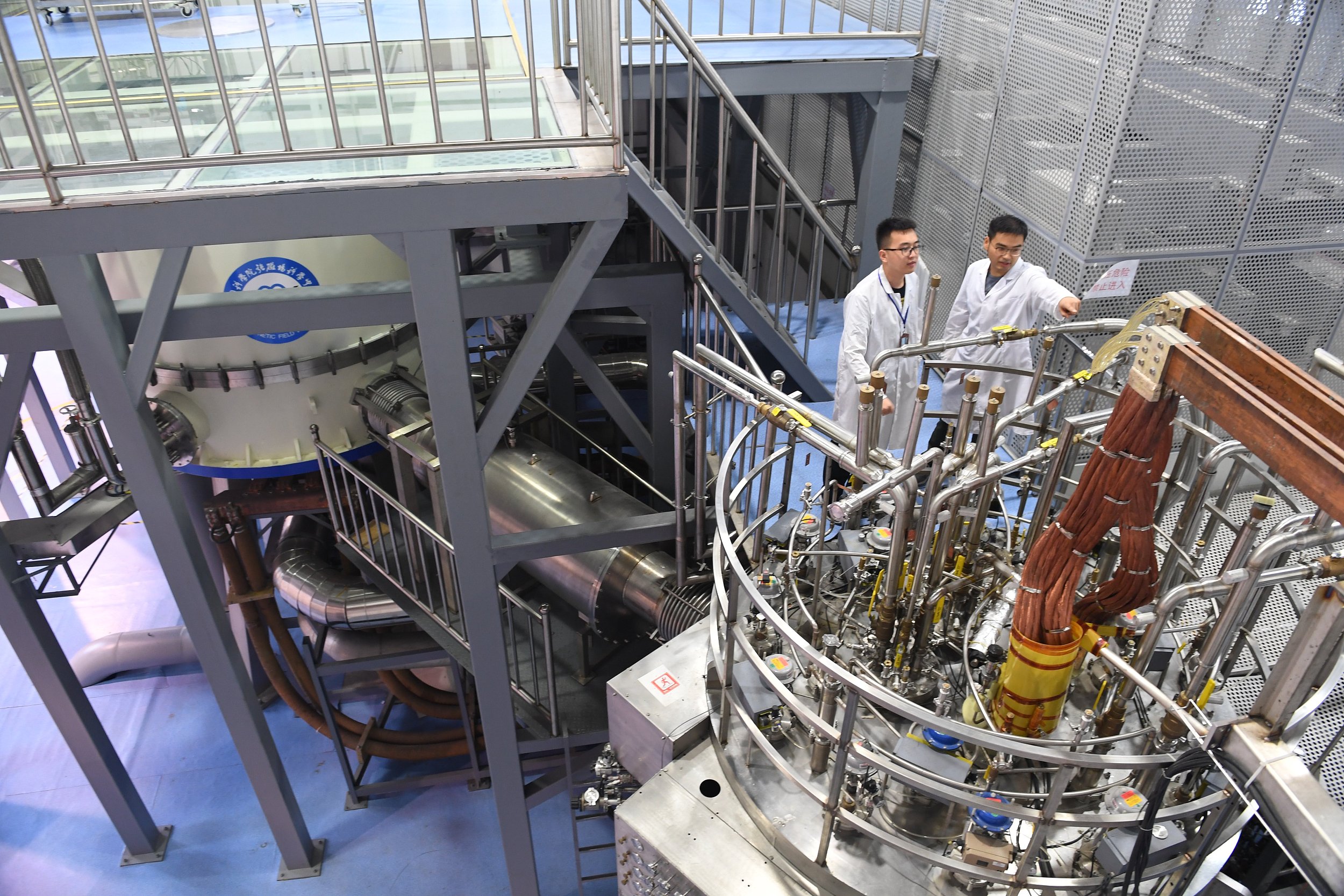Reducing Energy Use, Increasing GDP
Wheat harvest conducted through combine harvesters in northeast China's Heilongjiang province. (PHOTO: XINHUA)
By LU Zijian
Since 2014, China's energy consumption per unit of GDP has dropped by 20 percent, supporting an average annual economic growth of 6.2 percent, with energy consumption increasing by only 2.9 percent, according to Zhang Jianhua, administrator of the National Energy Administration, speaking at a recent media briefing in Beijing.
So how is the drop possible? The answer is that all industries are now striving to save energy via sci-tech approaches in their own effective way.
Energy-saving farming
To meet the target of agricultural energy saving, agricultural machinery has been improved to use less power. Old and high fuel consuming equipment, especially medium and large tractors, have been gradually replaced by newly developed machines that need less energy to operate. The installment of fuel economizers and adoption of diesel additives also helped to achieve such goals.
Another approach was to lift the production efficiency. Previously, many agricultural machines can only perform one task, adding up the operation times and fuel consumption of the machines inevitably.
For the past years, research institutes and enterprises have developed new kinds of machines that can perform multiple tasks, saving fuel and labor by over 30 percent.
Large agricultural machines and tools were also promoted around the country. Compared with medium and small agricultural machines and tools, larger ones perform tasks with higher efficiency and less fuel. Combine harvesters were also optimized to greatly lower the loss ratio of grain harvest.
In terms of saving energy consumption in rural life, methane gas created from livestock and poultry feces contributed greatly. As an example, in Anping county, north China's Hebei province, power generating efficiency via such methane gas reached over 42 percent, with utilization efficiency of waste heat reaching over 43 percent. The overall thermal efficiency of the project hit more than 85 percent.
New technologies in high energy-consuming industry
New technologies adopted to save energy in manufacturing, especially in the steel industry, have provided a big contribution to decreasing energy consumption per unit of GDP.
In Shougang Jingtang United Iron and Steel Co., Ltd in Tangshan, Hebei, the production of steel is controlled in an integrated and dynamic manner during the entire production process. Smart sensing and following of logistics in production are achieved via the dynamic controlling system.
Guo Zhancheng, professor at University of Science and Technology Beijing, said that the company saved the same energy as about 30 kilograms of standard coal by producing each ton of steel with new technology.
Electromagnetic heating for tundish was achieved domestically for the first time. Practices in many steel companies proved that a rise of more than ten percent in energy efficiency was realized compared with that of imported equipment.
If these technologies and equipment were to be promoted across China, the potential energy saved annually could be 30 million tons of standard coal, with an estimated annual steel production of one trillion tons, said Guo.
In addition, technologies concerning waste heat recovery of dust-laden exhaust gas in industrial production were also developed by researchers from institutes and enterprises. More than 20 companies have adopted such technologies and saved standard coal of 450,000 tons for the past three years.
Tertiary industry cuts energy consumption
Expressways and ports are not lagging behind when it comes to energy saving.
Between Lushi and Siwan on the Sanxi Expressway in central China's Henan province, a ground source heat pump system was installed, saving 40 percent of energy. Energy saving lights made up 47.7 percent of total lights in all the tunnels of this section of the expressway.
The ventilation in long tunnels was controlled in an intelligent way, with the power saving rate reaching between 20 and 30 percent. Distributed power supply was adopted as well to save energy.
After this section of the expressway started operation, it saved more than 9,000 tons of standard oil every year.
Dalian port in northeast China's Liaoning province pioneered energy saving. A new high efficiency system was adopted to reduce energy consumption in the circulation process of containers. Old motors and transformers that consumed excess energy were replaced.
Meanwhile seawater source heat pump technology was used in the buildings within the port. Seawater absorbs solar energy and geothermal power to generate heat supply in winter and cooling in summer. Compared with traditional air conditioning systems, such technology could reduce energy consumption by 30 percent.
Reducing energy consumption is one step towards a greener country, exploring renewable resources is another, and China remains committed to both.



